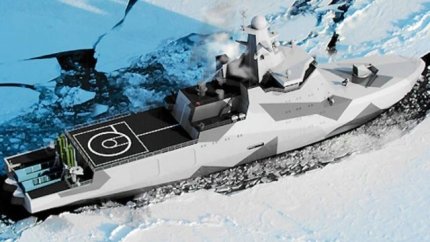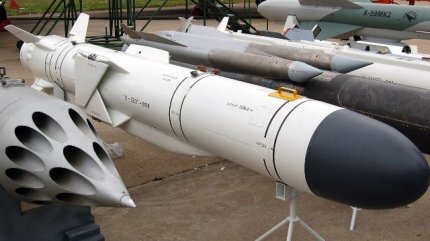The new Ivan Papanin icebreaker, which has already been launched in Russia, can carry anti-ship missiles "Uran" (or by other names "Zvezda" or "Kh-35"). It is also designed to carry "Kalibr" missiles.
Points of attention
- Project 23550 icebreakers, particularly Ivan Papanin, are designed to carry Kalibr and Kh-35 missiles to support the Russian Navy's needs.
- These icebreakers are designed for patrolling in the Arctic.
- The Kh-35 has high accuracy thanks to advanced guidance systems that guarantee successful strikes even in difficult conditions.
Icebreaker "Ivan Papanin" can carry two types of missiles
To meet the needs of the Russian Navy, the Admiralty shipyards are taking steps forward, conducting tests of the navigation and systems of the new Project 23550 icebreaker.
Designed specifically for surveillance and patrolling in the Arctic, this new class includes four units designed to augment forces such as the Coast Guard of the Russian Federation Border Service. These ships will be equipped with powerful weapons, such as the Kalibr family of missiles.
According to Russian sources, the latest trials at the shipyard in St. Petersburg focused on the first unit of the Ivan Papanin class. Launched in October 2019, this 8,500-ton patrol vessel made its maiden voyage this year. The last trials of the "Ivan Papanin" took place in the Baltic Sea, ending with the patrol ship's successful return to the northern Russian port.

The Russian Ministry of Defence reported that "during this stage of the tests, the crew and the delivery team from the Admiralty Shipyards conducted an inspection of the power plant, vital support and communication systems." Previously, the ship's crew underwent comprehensive training at the Joint Training Center of the Navy.
This class includes Ivan Papanin and another ship, Nikolai Zubov, currently under construction for the Russian Navy and will soon be launched. In addition, icebreakers "Purga" and "Dzerzhinsky" are presently being developed for the Coast Guard of the Border Service of the Russian Federation. They have different configurations tailored to their specific roles in the force.
A special feature of project 23550 icebreakers is their unique set of equipment designed for work in polar regions with thick ice cover. These icebreakers are armed with a 76.2 mm main gun in the bow, reinforced with two 30 mm AK-630M CIWS air defense systems and a Kalibr family cruise missile launch system. Some sources even suggest that they may be equipped with anti-ship missiles "Uran" (or "Zvezda" Kh-35, known in NATO as AS-20 Kayak).

What is known about the Zvezda Kh-35 missile
The Russian Zvezda Kh-35 is an anti-ship missile designed to target and neutralize enemy ships. The missile is known for its accuracy and effectiveness in naval warfare scenarios.
The Kh-35 has a length of approximately 4.5 m and a diameter of about 0.42 m. The compact size of the missile allows it to be deployed from various platforms, including submarines, surface ships and coastal defense systems, providing flexibility in its operational use.
The Kh-35's technical characteristics include a solid-fuel rocket engine that provides the necessary thrust for the missile to reach the target. It is equipped with advanced guidance systems, including inertial navigation and active radar homing, which ensure high accuracy even under challenging conditions. The missile's speed and manoeuvrability make it a formidable weapon against enemy ships.
The Kh-35 can be equipped with different types of warheads, depending on mission requirements. These include high-explosive fragmentation, designed for maximum damage to the target, and armor-piercing, effective against heavily armored ships. The versatility of warhead options allows the missile to be adapted to specific threat scenarios.
The Kh-35's range is estimated at approximately 120 km. This range allows the missile to hit targets at a considerable distance, providing a strategic advantage in naval battles. The missile's range, accuracy, and destructive power make it critical to Russia's maritime strike capabilities.



